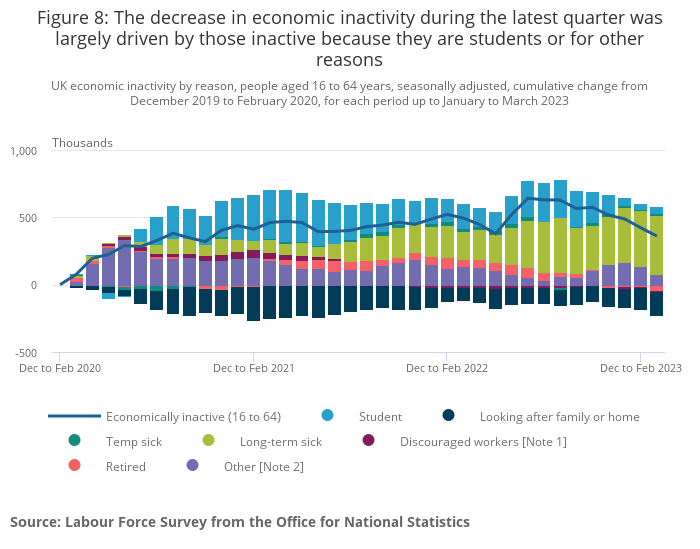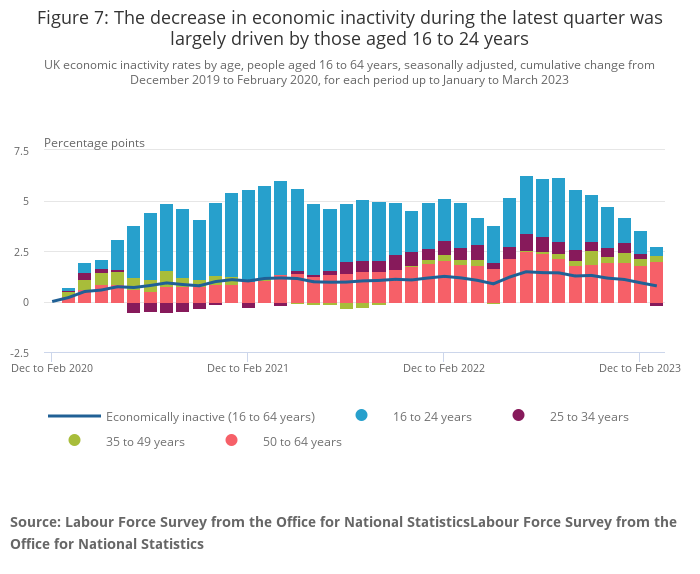Record 2.5m off work with long-term sickness as unemployment rises again
Mental health problems among young people and a rise in post viral fatigue is driving increase
Your support helps us to tell the story
From reproductive rights to climate change to Big Tech, The Independent is on the ground when the story is developing. Whether it's investigating the financials of Elon Musk's pro-Trump PAC or producing our latest documentary, 'The A Word', which shines a light on the American women fighting for reproductive rights, we know how important it is to parse out the facts from the messaging.
At such a critical moment in US history, we need reporters on the ground. Your donation allows us to keep sending journalists to speak to both sides of the story.
The Independent is trusted by Americans across the entire political spectrum. And unlike many other quality news outlets, we choose not to lock Americans out of our reporting and analysis with paywalls. We believe quality journalism should be available to everyone, paid for by those who can afford it.
Your support makes all the difference.The number of Britons not working due to long-term sickness has hit a record high, with the increase driven by a rise in mental health problems among young people and a rise in back and neck pain.
Official figures from the Office for National Statistics (ONS) show more than 2.5 million people were not working because of health problems.
There has been an increase in people suffering from post viral fatigue, according to the ONS, which could be reflecting the impact of long Covid on the population. The rise in back and neck problems could be due to home working, the ONS added.
Darren Morgan, director of economic statistics, said: “Since the onset of the pandemic there are well over 400,000 people outside of the labour market due to ill health. That means we are now at a record level.”
It came as the rate of UK unemployment rose to 3.9 per cent in the three months to March, up from 3.8 per cent in the previous quarter.
Most economists had expected the rate to remain unchanged at 3.8 per cent, but the new figure marks the highest level since the three months to January 2022, the ONS said.
The number of vacancies also dropped by 55,000 to the lowest level for 18 months amid economic uncertainty weighing on the UK’s jobs market.
The ONS said this reflects “uncertainty across industries, as survey respondents continue to cite economic pressures as a factor in holding back on recruitment”.

But the figures also showed a rise in the employment rate to 75.9 per cent and a fall in inactivity as more men in particular started looking for work.
Reacting to the unemployment rate, shadow work and pensions secretary Jonathan Ashworth said the figures were more evidence that the “Tory government is a drag on Britain’s economy”.
Lib Dem Treasury spokesperson Sarah Olney said the Tories were “out of ideas”. She added: “This is a damning verdict on the government’s attempt to ease the cost of living crisis.”
Explaining the rise in long-term sick, Mr Morgan of the ONS added: “The strongest increases in ill health have been in the conditions related to mental health, particularly in the young, a rise in people having musco-sceletal issues – so a rise in people having problems connected to the back and neck – with some theories of the increase in home working contributing to that.
“And we’ve also seen an increase in the category of post viral fatigue, so perhaps long-Covid having an impact there.”

Employment figures indicate that while more people are returning to the jobs market, not all of those looking for jobs are able to find work.
The ONS data also showed that wages are still failing to keep pace with rising prices, with real regular pay excluding bonuses down 3.1 per cent once Consumer Prices Index (CPI) inflation is taken into account.
This is despite another rise in average regular pay growth, to 6.7 per cent in the three months to March.
Chancellor Jeremy Hunt said: “It’s encouraging that the unemployment rate remains historically low but difficulty in finding staff and rising prices are a worry for many families and businesses.
“That’s why we must stick to our plan to halve inflation and help families with the cost of living.”

The data also laid bare the impact of strikes across Britain, with 556,000 working days lost due to industrial action in March, up from 332,000 in February.
But the pay gap between public and private sector is narrowing.
The ONS said average regular pay growth for the private sector stood at 7 per cent in the three months to March and 5.6 per cent for public sector workers – with the latter being the largest since August to October 2003.
The figures showed the number of unemployed Britons rose by 60,000 to 1.3 million in the three months to March, while those in employment also lifted – by 182,000 to 33 million.
Chris Thomas, head of IPPR’s Commission on Health and Prosperity, said: “More people are now out of work due to ill health than any other time since records began. This is a damning indictment of this government’s record on our health.
“Long-term sickness is fatally undermining our economy and holding back people’s ability to live long, happy and prosperous lives.”






